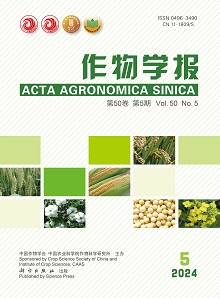Powdery mildew seriously harms wheat plant growth and restricts grain yield formation. In this regard, accurate monitoring powdery mildew is of great significance for the precise prevention and control and ensuring national food security. During the booting, anthesis and gain filling stages of wheat, wheat canopy spectrum data were obtained using a ground based hyperspectrometer, and the original spectrum was pretreated including first derivative, second derivative, logarithmic transformation, reciprocal transformation, and continuous removal method. The characteristic bands of five transformed spectral data and the OR data were extracted based on the combination of the CARS algorithm and the SPA algorithm. Finally, powdery mildew disease index (mDI) as a wheat monitoring model was established using Partial Least Squares Regression (PLSR), Ridge regression (RR), and Gaussian process regression (GPR). The results showed that the FD method gave the best comprehensive performance in Pearson correlation, two-band optimized combination, and machine learning technique, and it was a better preprocessing technique for processing of disease spectrum data. After spectral data transformation, the CARS-SPA combined algorithm could extract the characteristic bands more effectively, and the characteristic bands were 411, 450, 476, 543, 561, 594, 624, 671, 726, 780, 835, and 950 nm, respectively. Comparing all spectral preprocessing models and different machine learning methods, GPR model performed the best, followed by RR and PLSR methods. FD-GPR combined model generated the highest estimation accuracy, the averaged R2, RMSE, and MAE in the modeling set and the verification set under FD-GPR combination model were 0.805, 2.532, and 2.164 respectively, compared with the OR-GPR combined model. The averaged R2 increased by 12%, and the RMSE and MAE decreased by 19.6% and 17.6%, respectively, indicating that the GPR model had a good estimation ability to monitor wheat powdery mildew. In conclusion, using the FD method to preprocess the spectral data, the CARS-SPA combined algorithm to extract the characteristic bands, and the GPR method to build the estimated model, can improve the remote sensing monitoring accuracy of wheat powdery mildew. The research results provide ideas and methods for remote sensing monitoring of crop disease.

 WeChat
WeChat
 WeChat
WeChat